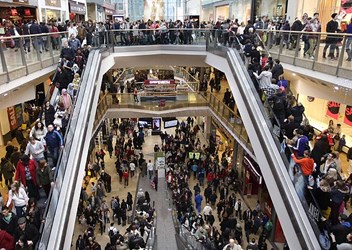Retailers Need To Ensure Fool-Proof Websites Before Black Friday Sales

Virtual waiting rooms can help win sales on busy holiday traffic days.
As retailers are gearing up for their busiest shopping season, they need to be paying particular attention to the health and durability of their websites to guard against lost sales from frustrated shoppers. The business cost of downtime on a website during campaigns, specifically Black Friday, is massive, with end-user overload potentially causing website failures during high traffic peak events.
RetailMeNot projects that consumer spending over the Black Friday weekend will increase 47 percent from 2016 figures, with consumers planning to spend an average of $743 this year during that period. And nearly seven in 10 shoppers plan to make holiday purchases over the Black Friday weekend. Meanwhile, Cyber Monday has overtaken Black in terms of online sales, with more than 56 percent of shoppers planning to make Cyber Monday purchases this year, up from 39 percent last year. That is significant, since Adobe data demonstrated that in 2016, Cyber Monday was the largest online sales day in history.
Forrester also predicts that online sales will account for 17 percent of all U.S. retail sales by 2022, an increase from 12.7 percent in 2017. That means that retailers need to optimize and maintain their website performance in order to capitalize on this trend.
As the volume of ecommerce expands, retailers need to boost their technology to ensure that the increase does not cause costly downtime or website failures during these high traffic peak events. To that end, a study from Queue-it has found that retail consumers are willing to wait online to access an ecommerce website, and these virtual waiting rooms can help to win important sales.
Queue-it analyzed data from its top ten retail ecommerce customers over the past year and discovered that more than 80 percent of end users who were directed to a virtual waiting room were willing to spend up to one hour there in order to enter a retail website and make a purchase. These findings are significant because they demonstrate that “customers are willing to wait longer than retailers expect, and that time spent waiting can increase conversion rates as customers become more invested in the process, and more apt to follow through with a purchase,” according to a press statement.
Addressing the explosion in web traffic during peak events like Black Friday is crucial for retailers, and since online traffic increases by 30 times in such periods with 23 times more end users attempting to access websites prior to retail sales, preventing website failures due to heavy traffic is essential. A virtual waiting room is one tool to help alleviate this problem by creating a “pre-queue.”
"Observing and measuring consumer behaviors is key for any ecommerce business," said Queue-it chief technology officer, Martin Pronk. "By analyzing collective consumer experiences across ecommerce companies we are able to understand the needs of our retailers better, while providing key insights that can guide their digital strategy. This can in turn lead to smarter business decisions that will lead to increased revenue and more successful campaigns in the future."
Among Queue-it’s customer base is Micro Kickboard, who launched a digital waiting room after its website crashed and it lost more than $10,000 in sales in just an hour of downtime. Jamie Rau, marketing director of Micro Kickboard, explained the importance of this process. He stated, “We estimate a loss of $15,0000 occurred on a key spring campaign day, based on approximately 30 percent of shoppers not being able to place orders due to website failure. The website couldn’t handle the customer inflow. We realized we needed something else in place to protect our customers’ online shopping experience and the company’s overall revenue.”
Since the implementation of the virtual waiting room, Micro Kickboard has only used the Splash page during times when it anticipates high volumes of site visitors, but it has found it to be effective. Rau said that 95 percent of shoppers who landed in the waiting room on Black Friday 2016 did not abandon the page and waited for their turn to shop. The virtual waiting room is also more effective than investing in more servers, which Rau said they had previously tried. She explained that even the additional servers were unable to keep the site from crashing at peak times.
With a projected combined online Black Friday and Thanksgiving spend of $5.57 billion this year, retailers need to brace themselves for challenges to their websites and take actions to make their customer experiences more engaging and satisfying.
